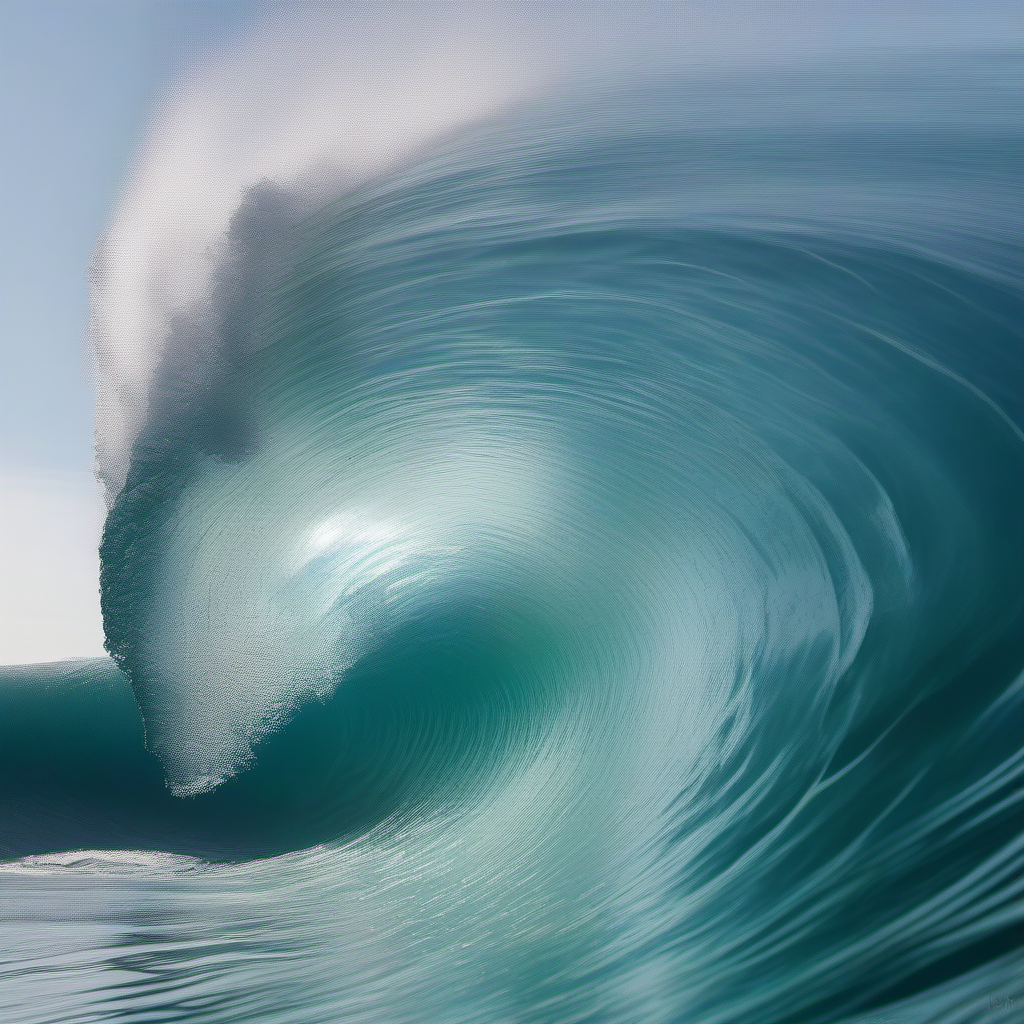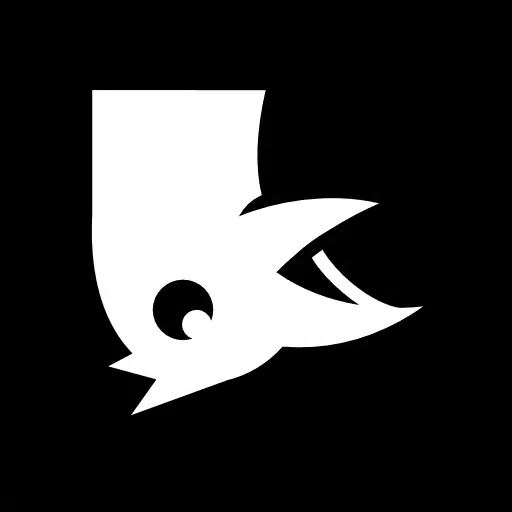This post just got inspired by (trying) to sign another receipt where the restaurant had a clogged ballpoint that would write only intermittently.
I don’t carry a pen with me. Most extended text I work with these days is typed, so don’t use one enough to really do so, but I have thought about doing so.
There are a couple of pen communities on Lemmy (which I’ll mention below, for folks who might be interested). Thought I’d get a broader cross-section view of the general public, though; pen enthusiasts tend to have their own, often kinda niche, positions.
A few years back, I decided that I’d hit up an online pen store, get a variety of pens, and see what I liked.
In general, I’ve found that:
-
Ballpoints are the most-common pen I see in the US. They use oil-based ink. They require a high amount of pressure to write with. They are inexpensive, don’t smear, and don’t bleed. And they are the only option if you need to use carbon paper, like on a check, due to that high pressure. But they are also exasperatingly prone to clogging, particularly on some receipts – not sure if it’s due to some sort of coating on the receipt paper. If you particularly like a given case, you can get non-disposable pens with semi-standardized inserts to “refill” a pen; these contain a replacement tip and ink container.
-
Rollerball pens or gel pens use water-based ink. I’m generally pretty enthusiastic about them; they’re probably my favorite as things stand, though I grew up mostly with ballpoints. They do have some drawbacks: they are more-prone than ballpoints to smearing (for those left-handed people out there who don’t write right-handed and drag their hand through fresh ink when writing, I suspect that that’s especially annoying). They’re more-prone than to bleeding through paper (though this depends on on the paper and ink). However, my experience has been that they do much better than ballpoints when it comes to writing consistently without clogging. They also write much more-smoothly than ballpoints; the tip’s interaction with the paper is closer to “gliding” over it, is less-fatiguing than writing with a ballpoint; many people find this to be a rather-pleasant surprise if they’re used to ballpoints. Larger-diameter tips are even smoother. I have no idea why I see fewer problems with clogging with these, as intuitively I’d think that “water would dry out, and oil wouldn’t”. But, well, I just rarely see clogging with 'em, whereas with ballpoints, it’s a near-universal. As with ballpoints, you can get semi-standardized inserts to “refill” a pen if you want a non-disposable. I would encourage most people to, if they have only used ballpoints in their life, to give a rollerball a try at some point; I was significantly happier.
-
Felt-tip pens have a solid core through which ink moves. I used to think of these mostly as permanent Sharpies for writing on odd surfaces (thick, not something you’d write with), highlighters (again, special-purpose, not something you’d write with) or washable, large-diameter pens for kids doing coloring or something, again not what you’d write with. But I have had some narrow-diameter felt-tip pens, and they tend to work pretty well. They don’t clog. They can dry out, if you leave them uncapped, but you can normally get even those going by adding a drop of water to the tip and letting the pen sit for a while. These do have some downsides – if you let the tip sit on one place on paper, they tend to bleed through, since it keeps dispensing ink. That’s not a problem with ballpoints or rollerballs. My experience is that they have more friction than rollerballs, don’t have quite the “gliding” feel. You have a lot of options as to size of the tip, can get very large ones. For writing, you probably want a narrow one; these have a metal sleeve and just expose a bit of the felt at the end. Apparently it’s possible, for some of these, to get refills, though I don’t believe that it’s common; these come in the form of liquid ink. Normally, I believe that these are disposables.
-
Fountain pens. I really thought that these were entirely-obsolete, though they certainly have some ardent fans. I’ve read a lot from enthusiasts about how one should clean nibs, only store them in particular orientations, etc. However, on a whim, I picked up a package of cheap disposables. I then stored them in a hot car for years, didn’t clean them at all, ignored storage orientation, did pretty much everything that I was told shouldn’t be done with fountain pens. They wrote without a hitch. So I decided to give 'em more of a chance. These have something of a “gliding” feel, kind of like rollerballs. The tips are a bit more-fragile than rollerballs or ballpoints, can damage them by stabbing things. The big drawback: these guys are prone to bleeding through paper; having a sheet of blotting paper or maybe a clipboard beneath when writing to soak up any extra ink is a good idea, unless you’ve got more control than I do. I did pick up some thicker, more-expensive paper, and that helps a considerable bit, but obviously, if you intend to use only one type of special paper for writing, that’s a pretty substantial constraint on pen use. They also tend to be more prone to smearing. Like felt-tips, as long as you keep the nib down, they’ll keep dispensing ink, so you gotta train yourself to lift the nib if you’re stopping movement. The big selling point with these, as best I can tell, is that you have an extremely wide variety of inks, and using non-disposable fountain pens that permit for refills is very common. Some people mix their own. The inks have various properties – here’s a page talking about sheen, shimmer, and shading – that can let them create really visually-impressive effects. They can dispense all sorts of exotic inks that wouldn’t work well in ballpoint, rollerball, or felt tip pens. I’ve never taken advantage of this, don’t write enough for it, but I do think that it’s neat; I have occasionally thought about picking up a fountain pen plotter, but don’t think that I’d likely plot enough for it to be worthwhile. Looking at the state of plotters and printer manufacturers, which frequently use a razor and blades model for ink, I think that it’d be nice to just be able to get whatever consumables from whomever.
There are a few other kinds of exotic pens, like fudepens (or “brush pens”) that are really more-interesting when doing stuff like East Asian lettering or some kinds of art, but aren’t really what you’d want for writing in normal-sized Latin script. Or paint markers; also not really something you’d expect to normally write with.
In general, I found that I preferred larger tips. As long as I don’t have to write in a too-confined space, ink flow with ballpoints and rollerballs was more-consistent and with them or felt tips, the writing was smoother.
As a kid, I used to use wood or mechanical pencils, but unless one needs erasability, I don’t really feel that they stand up to pens. With wood pencils, one needs to lug around a sharpener. With either, the graphite tends to smear over time; fold up a paper with pencil writing and put it in a pocket, and it’ll slowly blur to unrecognizability. And the graphite gets on things (and I’d just as soon not be having electrically-conductive dust being dumped everywhere).
For me, the big issue with going crazy on pens in 2024 is that I just don’t use one all that much. Even a lone disposable pen will last me a very long time. But it is nice to still be able to write consistently when one does want to write, and I felt that I’d never really sat down and looked into the various options out there.
Since I think that it’s worthwhile to mention relevant communities to help people find them, if they haven’t yet:
!fountain_pens@lemmy.world. Doesn’t seem to be getting much traction.
!fountainpens@infosec.pub. No traffic.
!pens@lemmy.world. Only a little traffic.
!pens@feddit.uk. No traffic.
There are also some .ml-based communities; I tend to use non-ml-based communities in preference to .ml-based communities myself, but for those who feel otherwise, there are !fountainpens@lemmy.ml, !pens@lemmy.ml, !pen@lemmy.ml, and !pensandpaper@lemmy.ml, none of which are seeing much activity.
Do pencils count?
I absolutely love my Pica. So useful for building work; the built in sharpener is genius. They do felt tip pen versions too but I found they run out too quickly

Do pencils count?
Sure, if you like 'em!
I fucking hate pencils because they keep breaking or going blunt. Hence the love for Pica
A good fountain pen is hard to beat, at least as long as you have appropriate slightly thicker paper to go with it. It’s not the most convenient at all times, but for stuff like journalling or creative writing it enhances the experience in a way you just don’t get with others pens in my experience. Both the sense of gliding across the page and the sound of it against the paper are so pleasant.
I also like how you don’t apply much pressure to get ink flow (none, in fact, much of the time: gravity does a lot of the work for you if the pen has decent mass). If I wrote with a ballpoint (even gel) as often as I wrote with my fountains, I’d have my hands cramping all the time.
I absolutely love a good fountain pen. My everyday carry is a LAMY Safari. I prefer a matte dark black ink such as Platinum Chou Kuro, but it’s quite expensive. I stick with Monteverde cartridges for my Safari for ease of use since I take it everywhere. They’re black enough to suit me and it dries rather quickly for less smear. Someday when I get something really fancy that stays at home, I’ll probably use Platinum Carbon Black, as it’s half the price of Chou Kuro, though I may just pony up for it.
Platinum also makes fountain pens. The Plaisir is notable because the cap seals incredibility well. The result is that it can go a loooonnnnggg time unused and the ink won’t dry out and clog it up. A great pen for those that only occasionally need to use a pen. Fairly cheap, too. Around $20, I think.
I’ll have to take a look!
For cheap-ish personal use, the Zebra F-402.
For expensive…need to research.
I’ve always liked Zebra pens, but the problem in the USA was you could either get fine ball point, or medium gel. No fine point gel for some reason. So I settled on the G-301 for a while (medium gel).
Then I sleuthed around on the internet and it turns out you can use Sarasa refills in them. Now I have a Zebra with fine gel. https://www.amazon.com/gp/product/B01E0OYVEC
The difference between .5mm and .7mm doesn’t sound like much, but it’s a pretty significant difference. I like the .5 a lot.
searches Amazon
They may not be readily available at brick-and-mortar, but it looks like one can get 0.5 mm Zebra gel pens online:
Ah yes, I forgot that detail. Those pens are slightly fatter than the G-301, so they’re not my preferred pen. If I remember correctly, the refills for those don’t fit in the G-301.
Screw Top pen, so that the ink won’t leak. Great for luggage, or a bag, so you don’t have to worry about heat, or having it thrown around, or pressurization changes. And usually you can put any ink cartridges inside that you like.

My fountain pens (linked elsewhere in this thread) are screw-top for that very reason!
It’s more hassle, I expect, but it also looks like one can get pen cases that should keep a pen’s cap from being pulled off, which might also address the problem if one particularly likes a pen that has a cap that doesn’t screw on:
https://www.amazon.com/s?k=hard+pen+case
I haven’t had issues with ballpoints or rollerballs leaking in bags. And I haven’t carried a fountain pen in a backpack or bag. But now that you mention it, I do kind of wonder what would happen if one carried a fountain pen in a backpack, the cap came partway off, and then the nib was depressed by the cap, since I imagine that ink would just keep running out of the thing.
EDIT: Probably also risk damaging the nib in that situation.
Pilot G2 gel ink pens. Preferably the ones with the fine tip.
I use a simple ballpoint most of the time. I use a rite in the rain notebook quite a bit so it narrows my options.
I knew a guy who was really into calligraphy and bought a $600 fountain pen with a gold nib (idk if that was the right term he used). I don’t know fountain pen stuff very well but it’s quite the investment so I hope it wrote well!
A digital pen, for use with a drawing tablet.
I’ve definitely been a rollerball fan since I first got one as a bonus in a pack of bic crystal ball point pens in middle school. I’m a fan of the Pilot G2 for most uses because the gel seems to flow even if you don’t use the pen for long periods of time.
I write a lot for work and settled on Pentel Energel in violet and noticed the ink doesn’t bleed as much as other gel pens, and I like how well they write. I do however use the ink in them really quickly (I buy refills by the dozen on Amazon). I’ll also throw in a nod to the Pentel Precise V5 retractable because i really like the fine point, but I always bend the tip and get worried I’ll snap it off. Also the uniball signo is a really nice pen but I haven’t purchased them in years.
Other stationary: I bought a kurutoga pencil that I haven’t used since I graduated, and I generally like to use retractable sharpies because I just like clicking things I guess. I did try to use a cheap fountain pen but I bent the nib and decided it probably wasn’t for me.
To answer the question, I very much prefer fountain pens. They’re much more economical in the long run, they write smoother and are less prone to clogging, and the different inks are just fun.
To the point about carbons: Not many situations require carbon copies these days. For those that do, you can usually pick up a vintage (not a modern) Esterbrook for a reasonable price and replace the nib. Esterbrook had a couple dozen different nibs, some specifically hardened for writing carbon copies. They’re also fairly easy to find.
There may be some modern pens that are good for writing carbons. Check Goulet Pens or some of the other online sellers.
NB: If you go for an Esterbrook, definitely look for the antiques. They may require a bit of maintenance, but they still write beautifully. The modern ones are made by some outfit that purchased the company name for overpriced branding, but they have no connection to the originals.
Vintage Esterbcook nibs are often quite scratchy. Late 1940’s and onwards Schaeffer pens have a much stiffer nib design and may be acceptable for modern carbon copy applications. I can’t remember what that newer nib design was called, maybe “Imperial” or something like that.
Also, the hooded nib of a Parker 51 could probably stand up to carbons too.
I have to write a fair bit by hand at work and I switched from the Pilot G2 to Sharpie S-Gels. They’re better in every way.
I swap between gel and ballpoint depending on what I feel like using at the time. That said, I think ballpoints are generally better. In my experience gel pens run out a lot quicker and tend to bleed into the other side of the page since they have thicker lines. Also they smear easier and take longer to dry. There’s a reason ballpoints are the de-facto pens, they’re reliable and have the least downsides of any alternative. Also really cheap and last a very long time. There’s a lot of garbage ballpoint pens out there but if you find a genuinely good one I think it can flow as smoothly as a good gel pen.
I tried a fountain pen once and my experience was similar to yours. It feels “exotic” but just has a lot of downsides and is easy to mess up your paper with them. It’s probably good for people who have fantastic handwriting or like drawing and want to control ink thickness on the fly.
In my experience gel pens run out a lot quicker
Oh, that’s true. I do understand that they do tend to consume a given volume of ink more quickly than ballpoints.
but if you find a genuinely good one I think it can flow as smoothly as a good gel pen.
If you can tolerate a larger-diameter tip, like 1.0 mm or larger, that’ll also increase smoothness (with rollerball as well).
Pilot G-2 05
Carry the same one for 6-9 months at a time until it either wears out or extremely rare occasions or “disappears”.
During all my years in education, I always used a mechanical pencil for almost everything, if I could. Obviously pencil isn’t suitable for everything, especially as it can’t be permanent, the way inks can.
But whenever I could, I’d write with graphite. Because it felt the best IMO and simply always, always, always worked. I took care of my pen and always kept it ready for use.
I had a nice one that used .5mm graphite. I don’t remember what hardness I used, but I preferred the thinner rods due to the result barely smearing at all, and also being more easily erasable. With thicker lead, I found you couldn’t get a middle ground where legibility, smearinyness and erasability were all excellent.
My pen had an eraser on the other end, the kind you could extend like a tube of lip balm as it got used up. Once it was gone, you could buy replacements that’d slot in.
For a while I tried thermal-erasable ink pens, but I didn’t stick with them, and went back to pencil.
I think that with mechanicals, 0.7 mm was by far the most-common I’ve seen. 0.5 showed up as well, but it required a light touch to avoid snapping the lead.
I also remember seeing 1.0 mm pencils.
Some months back, I went looking at pencils and discovered that there are also much-larger sizes that one can get; there are normally used for art, since you normally want them for shading. With a pencil, the shape of the tip is constantly changing, and that becomes more-significant the larger the diameter.
The really large ones were called “lead holders” rather than pencils, though one wouldn’t use those for normal writing.
EDIT: This kind of thing: this one is 5.6 mm:
https://www.jetpens.com/Kaweco-Sketch-Up-Clutch-Pencil-5.6-mm-Brass/pd/13396
The larger sizes don’t appear to be standardized the way the smaller ones, up to ~2.0 mm, are.
Of yeah, but in my case my use was exclusively writing. And yes, 0.7 is more common. The lead is just that little bit more durable, and cheaper pens are able to work well enough.
But I really didn’t like using anything thicker than .5. A wood pencil or even just .7mm both led to lines thick enough that a large amount of graphite dust would inevitably fall off the page and make a mess.
The whole reason I liked mechanical pencils so much was that with them I could use a harder and thinner lead that didn’t produce as much dust, or really even smear that much, and still get legible contrasty lines.
With the pen I had the lead never broke. If it does, it means the metal tube that the lead is extruded out of isn’t a good enough match to the diameter of the rod to support it and prevent it from bending under the pressure of the page. This can happen with cheap lead, or cheap pens, and the consequent wiggleroom inside the pen.









